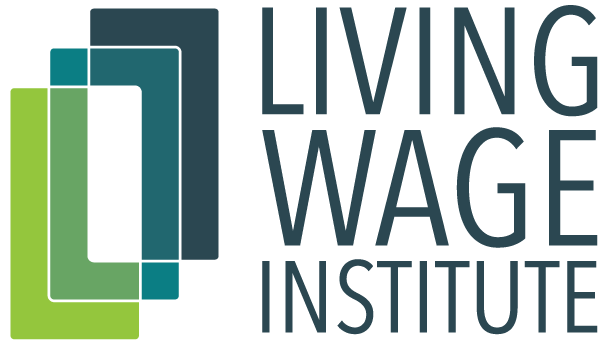



For further information, please visit the FAQs and Methodology pages or submit a question or request through the Contact page.
© 2024 Dr. Amy K. Glasmeier and the Massachusetts Institute of Technology
SIGN INIncome inequality is becoming a more and more pressing issue within the United States. The growth of the gap between America’s top earners and the rest of the country has many concerned that the poor and even the working class may soon be left behind as the economy develops. In the face of this rather ominous eventuality, much attention has turned to the role of the minimum wage in society and how it could be manipulated to address this issue. The efficacy of minimum wage shifts as policy solutions has long been debated amongst economists and politicians alike. Despite the plethora of discourse and research concerning this topic within the field of social science, a consensus has yet to be reached. Of most pressing concern is the impact that minimum wage shifts have on those near the bottom of the income distribution, in terms of affecting their financial well-being.
Researchers have attempted to answer the question of how minimum wage shifts impact the poor through a variety of studies. Part of what makes these studies difficult to conduct is the need to isolate effects of minimum wage shifts from other confounding economic factors. For example, an analysis performed by Jardim et al (2018) from the University of Washington finds that recent minimum wage increases in Seattle lead to decreases in employment for low wage earners. This is a common assertion by those who believe minimum wage increases are detrimental to the poor. However, this study also finds that Seattle’s minimum wage increase led to increased earnings for high-wage workers. A finding which is inconsistent with the general understanding of wage dynamics. This inconsistency has led many to question whether the effects observed in Jardim’s study can be attributed to minimum wage shifts or if they are being conflated with the impacts of other economic factors like the rapid job market shift in Seattle over the last few years.
A myriad of methodologies have been applied to effectively control for confounding factors. One such approach is to isolate minimum wage effects by analyzing pertinent data (earnings and employment) in localities before and after a minimum wage increase occurs and comparing the changes in these data to those observed in similar localities that had no minimum wage increases. Known as the “difference-in-differences” approach, the contrast in trends between those in cities that experienced minimum wage increases and those in cities where no minimum wage increases occurred (controls) can be attributed to the shift in minimum wage. This method is limited in efficacy by how closely the economic situations of control cities resemble those in the cities of interest. Allegretto et al (2018) of Berkeley’s Center on Wage and Employment Dynamics (CWED) applied this method to analyze trends within the food services industry in six cities that experienced minimum wage increases in the last decade. Using two distinct modelling methods their analysis found statistically significant earnings increases (relative to control cities) for food services employees near the bottom of the income distribution in quarters following minimum wage increases. Their analysis also found no statistically significant negative employment effects. In fact, the only statistically significant employment effect observed was an increase in employment (seen in Oakland, CA).
Another difficulty researchers face in attempting to answer questions about the impacts of minimum wage shifts on the poor is finding a representative population to analyze. Within the field, food services employees have become a common population of interest. With a median wage of $9.96 per hour the workers in this industry are at the low end of the income distribution most likely to be impacted by minimum wage shifts. Allegretto et al’s six city analysis is one example of a study that uses the food services industry as a basis. Another such instance is a study performed by Rachel Meketon (2017) of the MIT’s Department of Urban Studies and Planning (DUSP). Under the advisement of Dr. Amy Glasmeier, Meketon surveyed 50Boston restaurants to determine how employers in the food services industry responded ti the city’s minimum wage increase that took place between the years of 2014 and 2017. The analysis of survey replies showed that the most common responses of employers to the minimum wage increase were to continue operating as before or to increase menu prices. The next most common response by restaurant employers was to reduce staff hours. However, the time period observed to determine the impacts of the minimum wage increase also coincided with an increase in wholesale food prices and an increase in labor demand as well as a shift in employer health insurance obligations stemming from the Affordable Care Act. These confounding influences make it difficult to ascertain what influenced the responses of restaurants that were queried in the survey.
Overall, researchers often struggle to determine the longevity of impacts stemming from living wage shifts. If earnings increases for the poor quickly drop off after an initial minimum wage increase, then clearly shifting the minimum wage cannot serve as a viable long term solution to the growth of income inequality. Rinz and Voorheis (2018) of the U.S. Census Bureau’s Center for Administrative Records and Research Applications (CARRA) tackled this question in a study published earlier this year. The study combines data from W-2’s with information from the Census Bureau’s Current Population Survey (CPS) to observe trends in long term earnings growth over a five year horizon. Again employing a variety of modeling techniques the study shows that earnings growth persists at the five year mark after the minimum wage increases.
Understanding the impacts of minimum wage shifts in today’s society can be difficult. Social scientists who sought to interrogate the topic have often been stymied by a lack of consistent data available to develop assertions with robust quantitative backing. However, as localities across the country continue to raise the minimum wage in their jurisdictions more data will rapidly become available. This swell of information coupled with more advanced modelling techniques that are being developed bode well for the prospect of a definitive consensus being reached. As things stand, the literature seems largely in agreement. Increasing the minimum wage can increase earnings for the poor without impacting employment. This, however, begs another question. Will consensus on the impact of the minimum wage be enough to compel action at the federal level to raise the minimum wage in the face of this expanding income gap?
EMAILCAMPAIGN201810260436&utmmedium=email&utmterm=0e7c5826c50-7b1c8152b8-59759905&mccid=7b1c8152b8&mc_eid=60aed3563e
http://irle.berkeley.edu/files/2018/09/The-New-Wave-of-Local-Minimum-Wage-Policies.pdf
Meketon, Rachel (Rachel Anne) . 2017. The impact of labor standards on restaurant business practices in Boston, MA. Master’s Thesis, Massachusetts Institute of Technology.
https://www.census.gov/content/dam/Census/library/working-papers/2018/adrm/carra-wp-2018-02.pdf